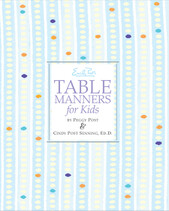
Etiquette for a Great Handshake

A great handshake can make a lasting impression and serves as a crucial aspect of business and social interactions. Here are the key elements and etiquette tips for executing a successful handshake:
Elements of a Great Handshake
Firmness:
A handshake should be firm but not overpowering. You want to convey confidence without being aggressive. Aim for a grip that feels connected but also balanced. Think about listening with your hand. Use approximately the same pressure you would use to turn a door knob.
Eye Contact:
Make direct eye contact while shaking hands. Direct your face and shoulders toward the other person as well as your eyes. This demonstrates sincerity and attentiveness, indicating that you're engaged in the interaction.
Duration:
A handshake should last for about 2-3 seconds, that is one, maybe two, soft shakes up and down. It should be long enough to be meaningful but not so long that it becomes awkward.
Distance:
About 18 inches is a comfortable social distance for most people in North America. When both people make this allowance it leaves a common distance of about three feet that can be crossed by extending a hand about an arms length.
Palm Orientation:
Your palm should be facing sideways, directly in the vertical plane. Avoid turning your palm down, which can convey dominance, or palm-up, which can appear submissive.
Posture:
Stand up straight and lean slightly towards the person you are shaking hands with. Good posture shows confidence and engagement.
Smile:
It is the oldest cliche in etiquette, because it has always been true and it has always been good advice. A smile on your face will transform a handshake just as it will anything you do with others. A pleasant and easy disposition, showing your eagerness to connect, communicated with a warm smile is the perfect compliment to your outstretched hand and is not to be forgotten.
Both Hands?:
In general, keep the second hand out of the equation when it comes to a handshake. The hand hug, when a second hand clasps over a handshake can convey warmth, support, and connection but can also be interpreted as controlling. Have a default handshake that uses one hand and save the second hand for when you want to really say something different.
Cleanliness:
Ensure your hands are clean and dry. It is a basic courtesy. This is where the advice to hold beverages in your left hand at mix and mingle events comes from. Cold and condensation from the glass can impact the impression of your handshake.

Etiquette Tips for Handshakes
Initiating the Handshake:
In a professional setting, the person whose title or role is higher usually initiates the handshake. In more casual settingslll In social situations, it’s often acceptable for anyone to reach out first.
Shake Hands Standing:
When shaking hands, stand up if you’re seated. This shows respect and creates a more equal interaction. In some, more traditional, social settings woman may choose to remain seated, but for the most part people are rising to shake.
Avoid Distractions:
Focus on the handshake and the moment of true connection it offers rather than looking around or rushing on to the next thing. Try to be present in the moment, it only lasts for a breath or two. This shows respect and attentiveness to the other person.
Release the Hand:
Knowing when to let go in life is a true skill. After the handshake, gently release the person's hand (don't pull or yank away quickly) to avoid an awkward or uncomfortable situation. Usually, the act of releasing inspires a similar response in the other person. Follow up with a smile or a friendly greeting.
Context Appropriateness:
Consider the context of the meeting. In some informal situations, a lighter or less formal greeting may be more appropriate, while in formal interactions, aim for a more traditional handshake.
Declining a Handshake:
If you are unable to shake or decline to shake, acknowledge it and use your words, tone, and expression to convey some of what is communicated with a handshake. "Sam, pardon me for not shaking hands. It is so good to finally meet you in person. After two months of emails I feel like we know each other already."
By incorporating these elements and adhering to proper etiquette, you can ensure that your handshake conveys confidence, respect, and consideration—qualities valued highly in both personal and professional interactions.








